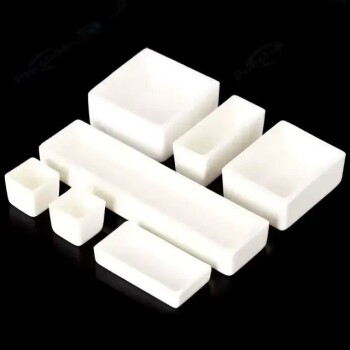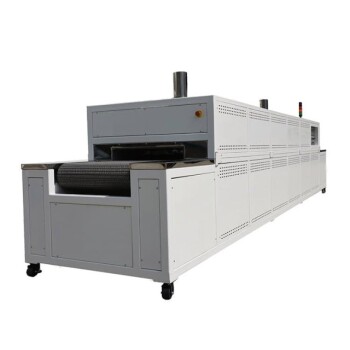マッフル炉の概要
種類と用途
マッフル炉は高温灰溶融炉とも呼ばれ、汎用性の高い加熱装置で、様々な産業分野で使用されています。マッフル炉は以下の分野で不可欠です。 熱処理 マッフル炉は、特定の物理的・化学的変換を達成するために材料の加熱・冷却を制御する熱処理に不可欠です。製薬分野では 製薬分野 マッフル炉は滅菌や熱分解などのプロセスに使用され、医薬品の純度と有効性を保証します。
分析化学 分析化学 特に有機物を無機残渣に変換してさらに分析する灰化などの技術では、試料調製において重要な役割を果たします。石炭分析 石炭の品質分析 マッフル炉は石炭試料の灰分と発熱量を測定するために使用され、エネルギー生産と環境評価に重要なデータを提供します。
金属 焼結 マッフル炉は金属粉末を圧縮して機械的特性を向上させた固体形状にするのに役立ちます。同様に 熱処理 金属の微細構造を変化させ、硬度、強度、耐摩耗性を向上させます。
セラミック焼成の分野では セラミック焼成 セラミック焼成の分野では、マッフル炉はセラミックのガラス固化に必要な高温を達成するために不可欠であり、セラミックの耐久性と美的品質を保証します。最後に 実験研究 マッフル炉は、高温実験を行うための信頼性の高い手段を提供し、様々な科学分野の進歩を支えています。
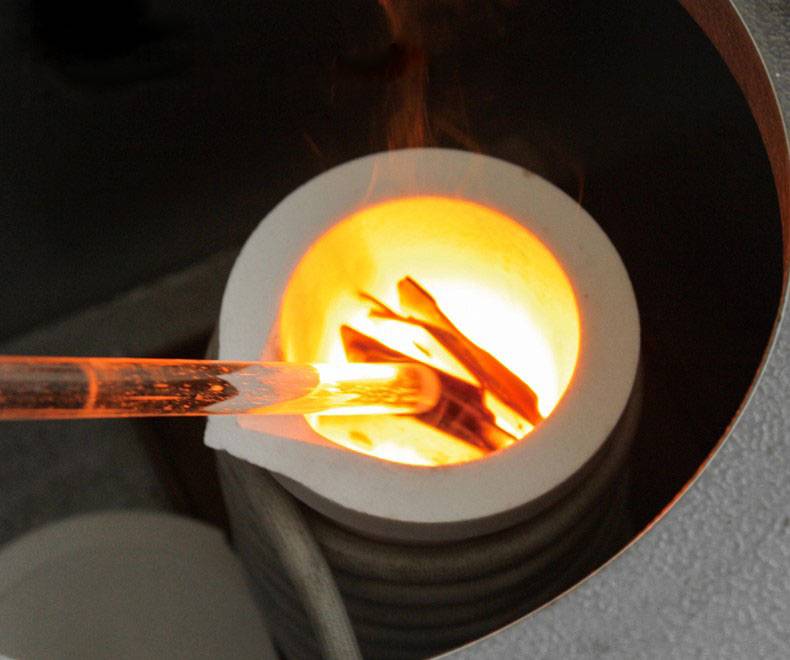
性能の特徴
マッフル炉は実験室の多様なニーズに対応する様々な性能を提供するよう設計されています。マッフル炉は1000℃を超える広範な温度範囲での運転が可能で、セラミック焼成や金属焼結などの高温用途に適しています。これらの炉の加熱速度は著しく速いため、迅速な熱処理が可能となり、実験サイクルタイムを大幅に短縮することができます。
高精度の温度制御はもう一つの重要な特徴で、炉が正確な温度を維持できることを保証します。このレベルの制御は、±1℃以内の精度を提供する高度な温度制御システムによって達成されることが多く、分析化学やその他の高感度用途に理想的です。
マッフル炉のチャンバー容積はカスタマイズが可能なため、研究室はそれぞれのニーズに応じて適切なサイズを選択することができます。少量サンプルでも大量バッチでも、チャンバー設計の柔軟性により、炉は様々な実験セットアップに対応できます。
先進的な機種には、炉の効率を高めるだけでなく耐久性にも貢献する省エネセラミックファイバーチャンバーが装備されているものもあります。これらのチャンバーはより効果的に熱を保持するよう設計されており、エネルギー消費を削減し、炉の寿命を延ばします。このようなエネルギー効率と耐久性の組み合わせにより、セラミックファイバーチャンバーは多くの実験室で選ばれています。
主な特徴
マッフル炉は、様々な実験室および工業用途に適したいくつかの重要な特徴を持っています。これらの特性は炉の機能性を高めるだけでなく、操作の安全性と効率性を確保します。
際立った特徴のひとつは 分割式本体 これはメンテナンスと修理を容易にします。加熱室と制御盤を分離することで、電気的危険性を低減し、発熱体などの部品交換を容易にします。
インテリジェント・コントローラー は、高度な自動化と精度を提供する、もうひとつの重要なコンポーネントです。これらの制御装置は複雑な加熱サイクルを管理するようにプログラムすることができ、炉が望ましい温度範囲と時間で運転されるようにします。多くの場合、ユーザーフレンドリーなインターフェースを備えているため、初心者オペレーターでも炉の設定や監視が簡単に行えます。
また 耐久性のある発熱体 は、長期間にわたって安定した性能を維持するために不可欠です。炭化ケイ素や二珪化モリブデンのような高品質の材料で作られることが多いこれらのエレメントは、劣化することなく高温に耐えることができるため、信頼性の高い加熱と炉の長寿命化を実現します。
高度な温度制御システム は炉内温度を正確に制御します。これは分析化学や材料科学など、正確な温度条件が要求される実験には極めて重要です。最新の炉の多くは±1°C以内の温度均一性を提供し、これは一貫した結果を得るために不可欠です。
実験室環境では安全性が最重要課題であり、マッフル炉には以下の安全機能が装備されています。 安全機能 .自動シャットオフ機構、過昇温アラーム、緊急停止ボタンなど、監視のない状態でも炉を安全に運転できるような機能が装備されています。
最後に 炉室のカスタマイズ により、さまざまなタイプやサイズの試料に柔軟に対応できます。ルーチン分析用に小型のチャンバーが必要な場合でも、バルク処理用に大型のチャンバーが必要な場合でも、カスタマイズ可能なオプションにより、ファーネスは特定のニーズに対応することができます。
まとめると、これらの特徴を併せ持つマッフル炉は、広範な実験用途において汎用性と信頼性の高い選択肢となります。
適切なマッフル炉の選択
温度要件
マッフル炉を選択する際には、特定の実験に必要な温度範囲を考慮することが極めて重要です。プロセスによって要求される極端な温度は異なり、これらのニーズを理解することは適切な装置を選択するために不可欠です。
例えば、材料の乾燥には一般的に500~600℃の中程度の温度が必要です。この範囲であれば、熱劣化を引き起こすことなく、材料を効率的に乾燥させることができます。一方、セラミックの焼成工程では、はるかに高い温度が要求されることが多く、最高1700℃に達することもあります。このような高温は、セラミックに求められる構造的・物理的特性を実現するために必要です。
| プロセスの種類 | 温度範囲 | 温度制御の重要性 |
|---|---|---|
| 材料の乾燥 | 500-600°C | 熱劣化のない効率的な乾燥を実現 |
| セラミック焼成 | 最高 1700°C | 所望の構造的・物理的特性を実現 |
これらの温度要件を理解することは、実験の熱的ニーズを的確に満たし、最適な結果とプロセス効率を確保できるマッフル炉の選択に役立ちます。
炉室サイズ
マッフル炉を選択する際、チャンバーサイズは実験効率と結果に直接影響する重要な検討事項です。チャンバーサイズは、処理しようとする試料のサイズと数に見合ったものでなければなりません。試料が大きい場合、または試料量が多い場合は、均一な加熱と処理に必要なスペースを確保するため、ファーネスチャンバーを大きくする必要があります。
適切なチャンバーサイズを決定するには、まず典型的な試料の寸法を評価することから始めま す。これらの試料が標準的なものなのか、異常に大きなものなのかを検討します。例えば、大きなセラミック片や複数の試料を同時 に扱うことが多い場合は、より大きなチャンバーが不可欠です。逆に、小型のチャンバーは、よりコンパクトなサンプルや個々のサンプルに適しており、スペースとエネルギー効率を最適化します。
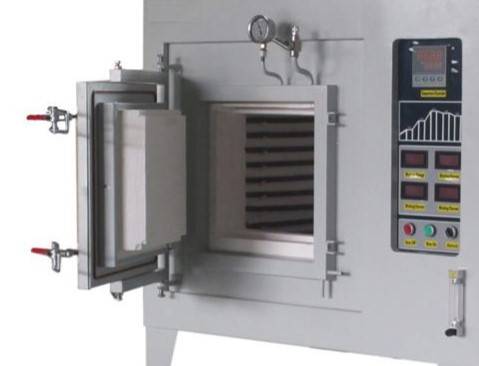
考慮すべきもう一つの要因は、定期的に処理する試料の量です。処理能力が高ければ、頻繁な再装填を避け、連続運転を維持するために、より大きなチャンバーが必要になります。これは製薬や分析化学ラボのようにバッチ処理が一般的な業界では特に重要です。
まとめると、炉室サイズの選択はラボの具体的なニーズによって導かれるべきです。試料のサイズと体積を注意深く評価することで、実験に最適な性能と効率を保証するチャンバーを備えたマッフル炉を選択することができます。
温度均一性
精密な実験のためには、温度均一性の高い炉を選択することが重要です。この均一性は一般的にホットゾーン全体の温度変化で測定され、多くの場合範囲 (±20°F など) で表されます。例えば、AMS 2750D, Class 4に準拠した炉では、300-600°Fの範囲内で±20°Fの温度均一性が得られます。このレベルの精度は、炉室内のすべての試料が一貫した加熱を受けることを保証し、再現性のある結果を得るために不可欠です。
しかし、すべての用途でこのような厳しい均一性が要求されるわけではありません。例えば、一般的な材料の乾燥では、同じレベルの精度は要求されないかもしれません。このような場合、より広い温度均一性仕様の炉で十分な場合があり、プロセス全体の有効性を損なうことなくコストを削減することができます。
炉の温度均一性は、断熱や発熱体の配置を含むホットゾーンの設計に大きく影響されます。最適な均一性は、隙間や開口部、特にガス出口ポートなどの重要な箇所を最小化する慎重な設計によって達成されます。さらに、マルチゾーン加熱システムは動的に入力を調整するのに役立ち、チャンバー全体の温度分布をより均一にします。
| 温度範囲 | 均一性 (±°F) | AMS 2750Dクラス |
|---|---|---|
| 300-600°F | 20 | クラス4 |
| 600-900°F | 15 | クラス 3 |
| 900-2500°F | 10 | クラス 2 |
これらの仕様を理解することで、高精度と実用性をバランスさせながら、お客様の研究室のニーズに適した炉を選択することができます。
昇温速度
ラボのニーズに合わせてマッフル炉を選択する場合、特に急速な熱サイクルを必要とするプロセスでは、昇温速度は考慮すべき重要な要素です。昇温速度の速い炉は、所望の動作温度に到達するまでの時間を大幅に短縮できるため、実験スケジュールを早め、全体的な効率を向上させることができます。
急速焼結や迅速な熱処理などの用途では、短時間で高い温度勾配を達成できる炉が不可欠です。このような迅速な熱処理には、周囲温度から運転温度へ迅速に移行し、必要な時間枠内で材料特性を確実に変化させることができる装置が要求されます。
しかし、すべての実験室プロセスで急速な温度上昇が必要なわけではないことに注意することが重要です。例えば日常的な焼結では、定常温度で長時間加熱することが多いため、この機能は必要ないかもしれません。このような場合は、性能とコスト効率のバランスを考慮し、昇温速度が緩やかな炉で十分な場合があります。
| プロセスタイプ | 昇温速度要件 |
|---|---|
| 急速加熱プロセス | 高温 (昇温速度が速い) |
| 定常焼結 | 中程度(安定した温度上昇) |
まとめると、速い昇温速度は特定の実験用途では画期的な変化となり得ますが、普遍的に必須というわけではありません。特定の実験ニーズを慎重に検討することで、速度とコストの最適なバランスを決定することができます。
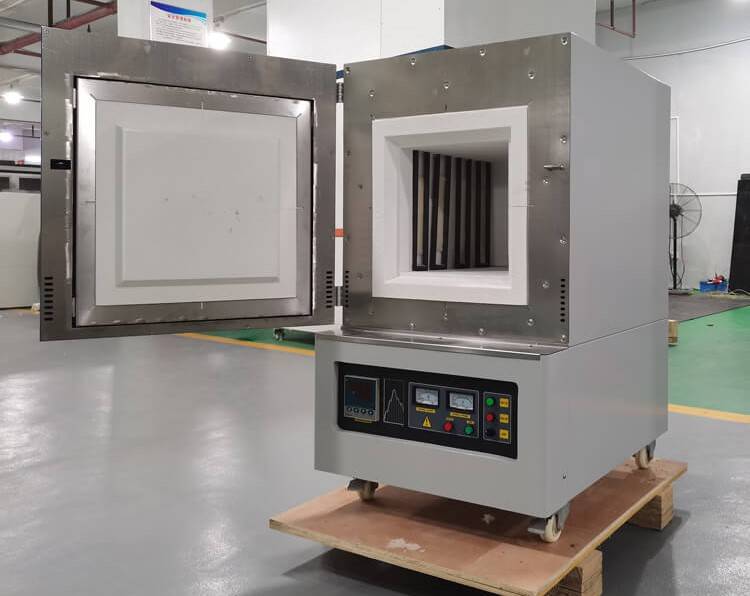
制御精度
厳密な温度制御を必要とする実験では、通常±1℃以内の高精度の炉を選択することが不可欠です。このレベルの精度は、熱条件の一貫性と所望のパラメーターの維持を保証し、繊細な材料や精密な化学反応を伴う実験には極めて重要です。
| 精度レベル | 代表的なアプリケーション |
|---|---|
| ±1℃以上 | 正確な温度制御を必要とする分析化学、製薬研究、実験的研究 |
| ±5℃以上 | 一般的な加熱処理、材料乾燥、日常的な焼結プロセス。 |
対照的に、材料乾燥や日常的な焼結などの一般的な加熱処理では、それほど厳しい精度が要求されない場合があります。このようなプロセスでは多くの場合、より広範な温度変動が許容されるた め、あまり精密でない制御の炉でも十分対応可能です。従って炉の選択は、効率と精度の両方を確保するために、実験の具体的な要求に沿うものでなければならない。
炉の材質
マッフル炉を選択する場合、炉床の材質は炉の性能と寿命に直接影響する重要な要素である。ハースに使用される主な材質はセラミックファイバーと耐火レンガの2種類で、それぞれ異なる用途に合わせた明確な利点があります。
セラミックファイバー製ハースは、急速加熱能力とエネルギー効率で有名です。これらのハースは、迅速な温度変化を可能にする軽量の断熱材で構成されているため、頻繁または急速な加熱サイクルを必要とするプロセスに最適です。エネルギー効率に優れた設計は、運用コストの削減に役立ち、エネルギー消費が重要な関心事である実験室には特に有益です。
一方、耐火レンガ製ハースは、極端な温度にも耐えられるように設計されており、高温用途に適しています。これらのハースは、長時間高熱にさらされても劣化しない材料で作られているため、セラミックの焼成や金属の焼結など、連続的な高温処理が必要な作業に適しています。セラミックファイバーハースと比較すると、加熱に時間がかかる場合がありますが、優れた耐久性により耐用年数が長くなり、厳しい条件下でも安定した性能を発揮します。
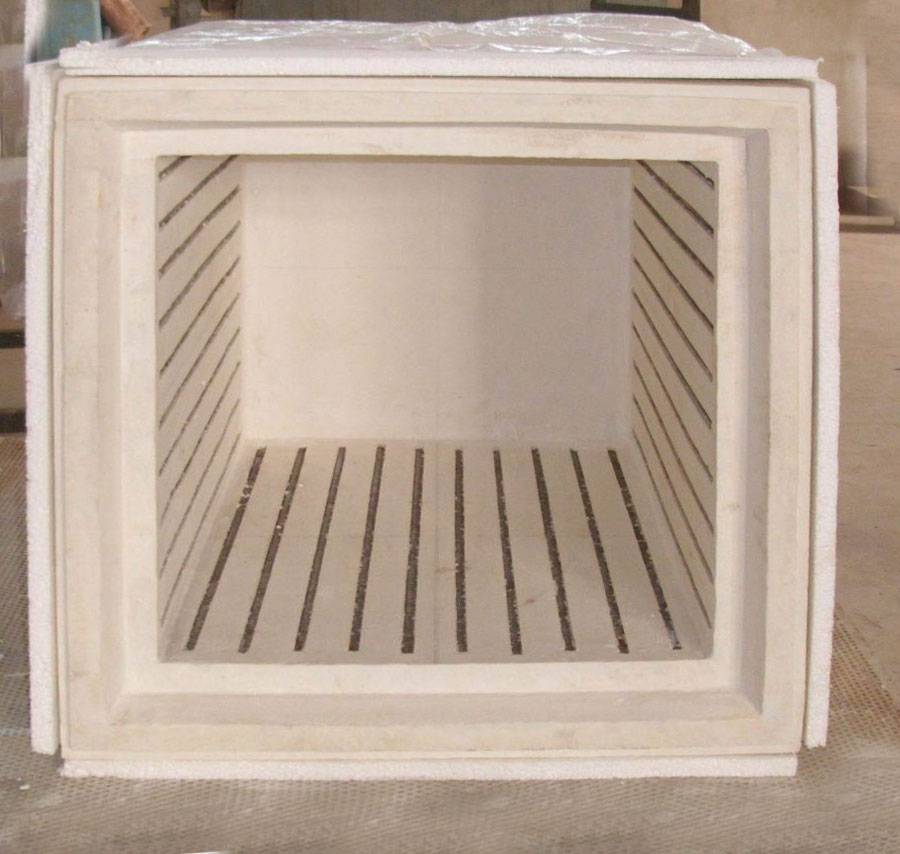
これらの材料のどちらを選択するかは、ラボのプロセス固有の要件によって決まります。迅速な加熱とエネルギー効率が必要な実験には、セラミック繊維ハースが望ましい選択です。しかし、連続的な高温操作を伴う用途には、耐火レンガのハースが必要な堅牢性と信頼性を提供します。
追加機能
マッフル炉を選択する際には、実験の機能性と効率を高める機能を考慮することが重要です。 プログラム制御 は、精密で多段階の熱処理を必要とする実験に特に有益です。これらの制御装置は加熱プロファイルのカスタマイズを可能にし、プロセスの各段階が正確かつ一貫して実行されることを保証します。
自動アラーム はもう一つの重要な機能で、特定の温度に達した、電力が変動した、システムが故障したなどの重要なイベントをリアルタイムで通知します。これにより、いかなる問題にも迅速に対処でき、実験エラーや装置損傷のリスクを最小限に抑えることができます。
以下のような実験では デリケートな材料 または タイムクリティカルなプロセス 以下のような機能があります。 リモートモニタリング および データロギング は非常に重要です。これらの機能により、温度データを長期にわたって追跡・記録することができ、炉の性能と実験結果に関する貴重な洞察を得ることができます。
さらに 省エネ技術 さらに セラミックファイバーチャンバー セラミックファイバーチャンバーなどの省エネルギー技術を装備した炉もご検討ください。これらの機能は運転コストを削減するだけでなく、より持続可能な実験室環境にも貢献します。
これらの追加機能を慎重に評価することで、実験ニーズを満たすだけでなく、実験室作業の全体的な効率と効果を高めるマッフル炉を選択することができます。
関連製品
- 1200℃実験室用マッフル炉
- 実験室用 1700℃ マッフル炉
- 1400℃ マッフル炉 ラボ用
- 実験室用1800℃マッフル炉
- 実験室マッフル炉用エンジニアリング先進ファインアルミナAl2O3セラミックるつぼ





